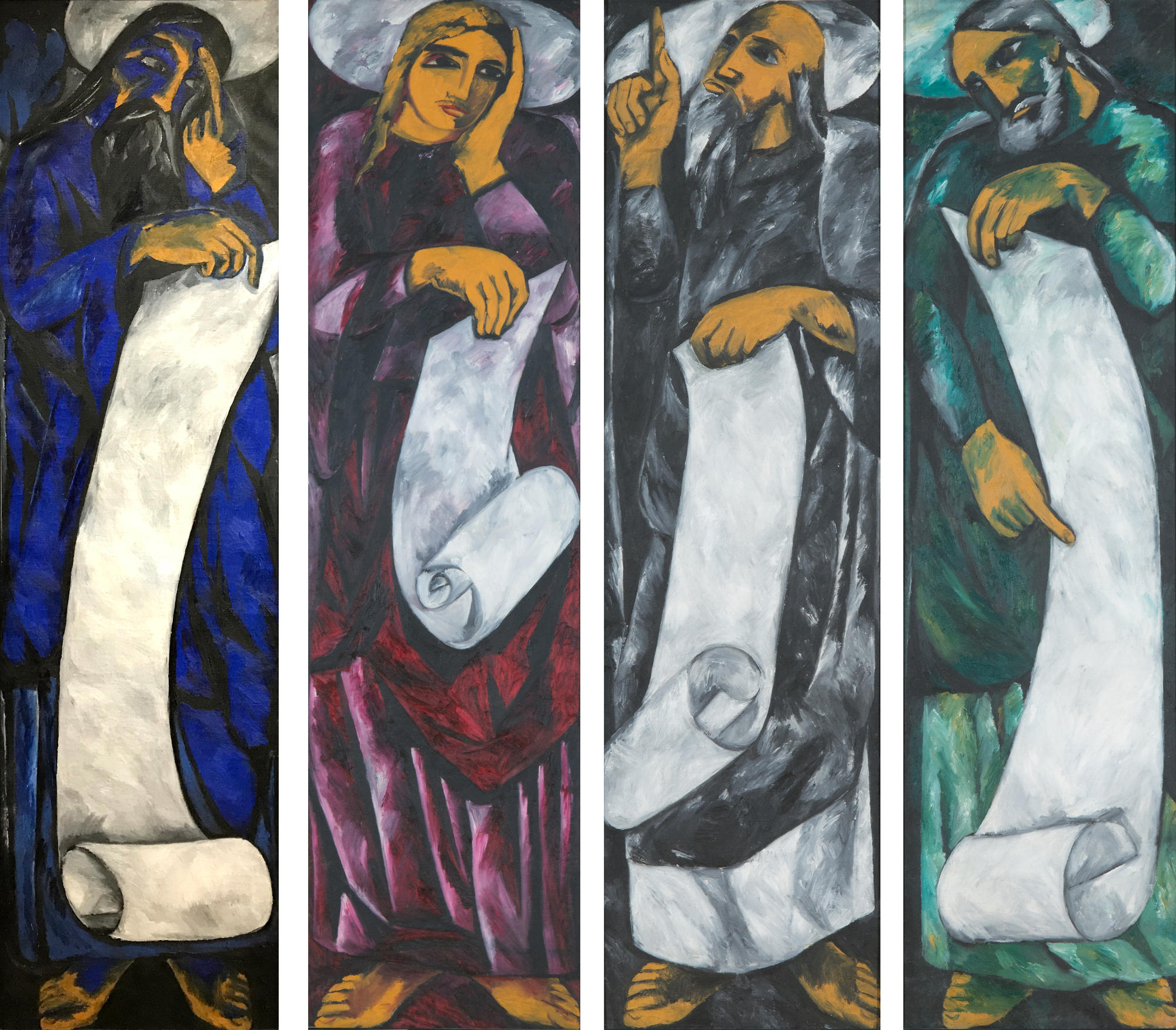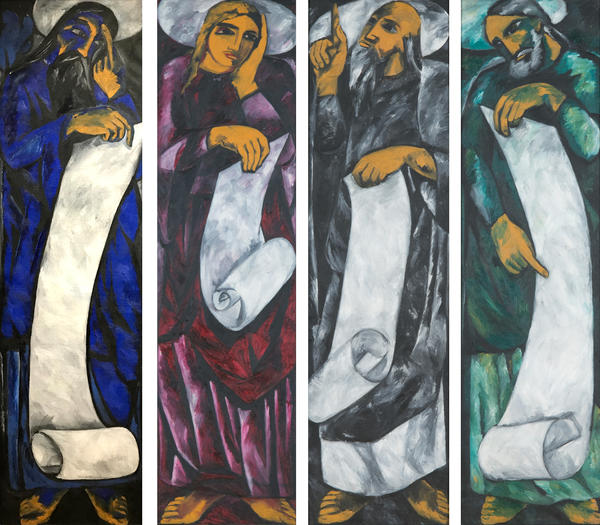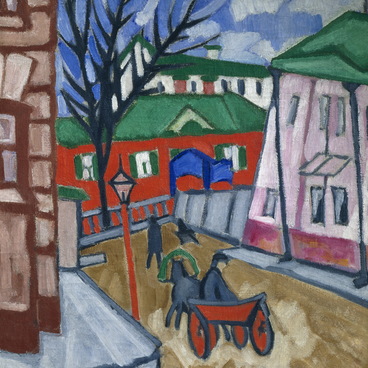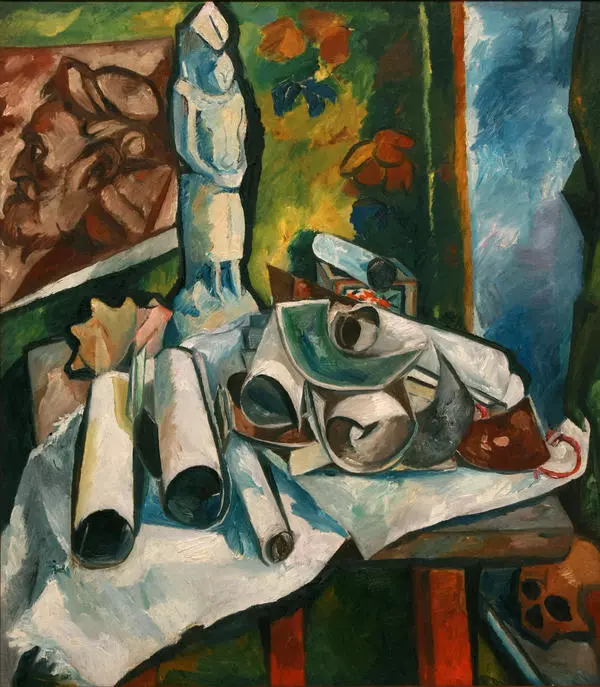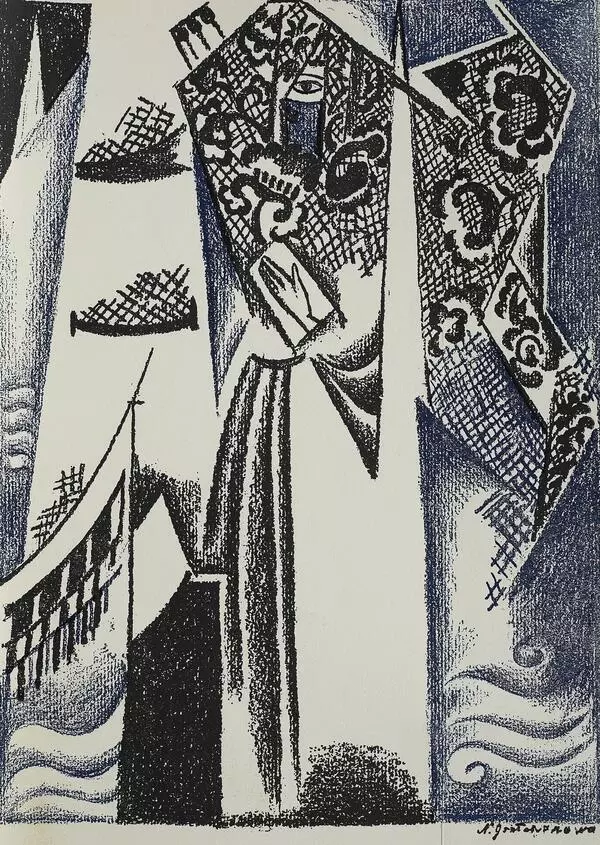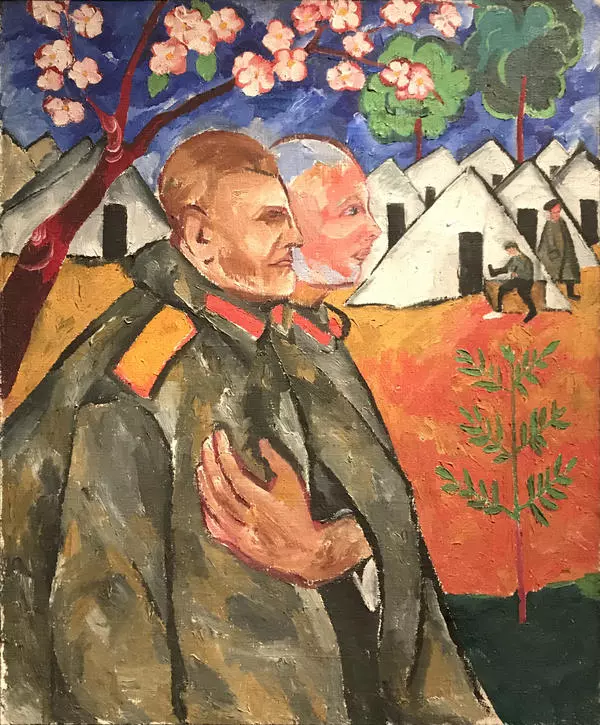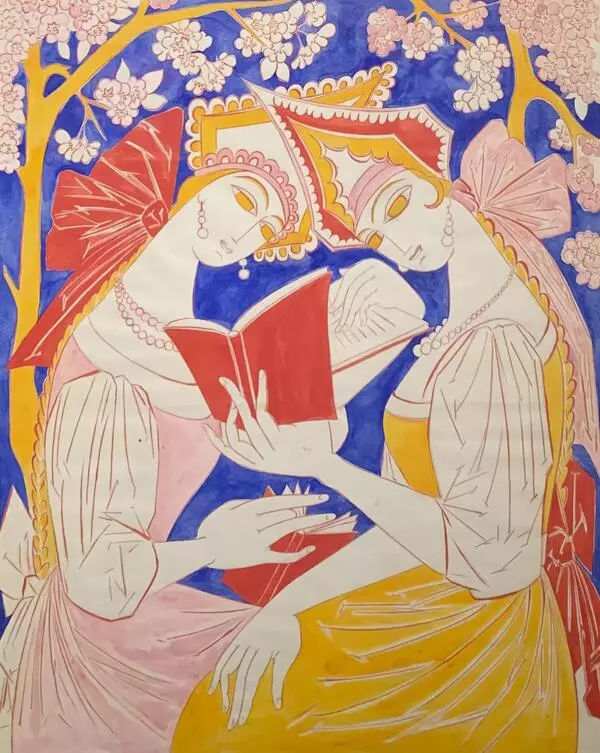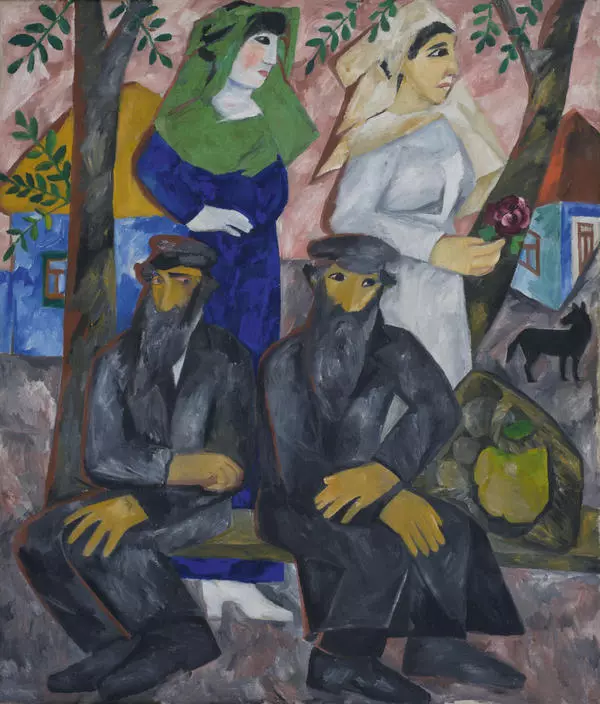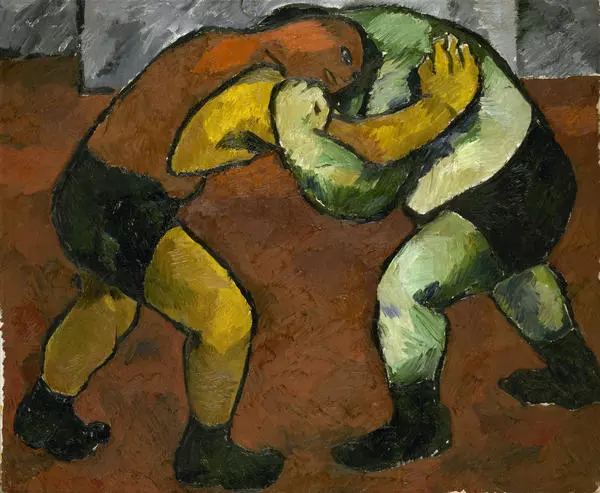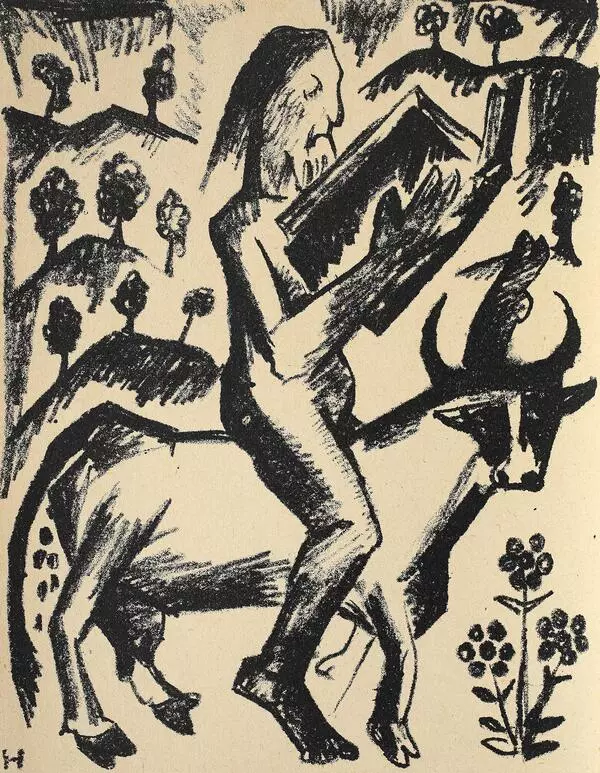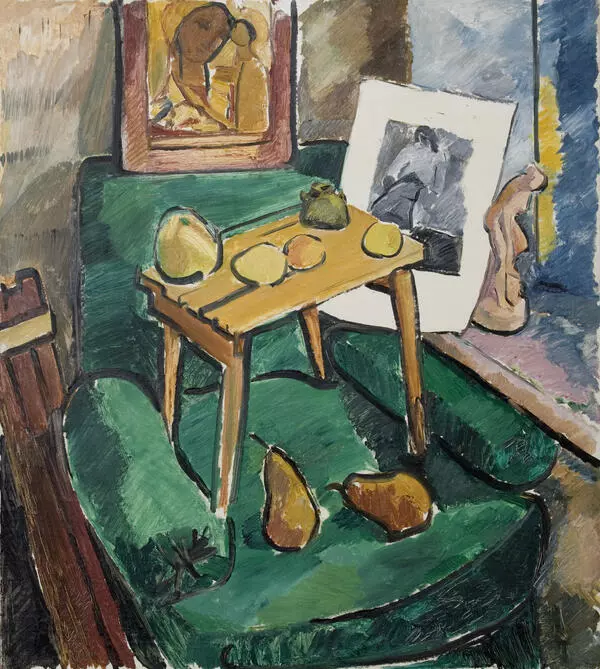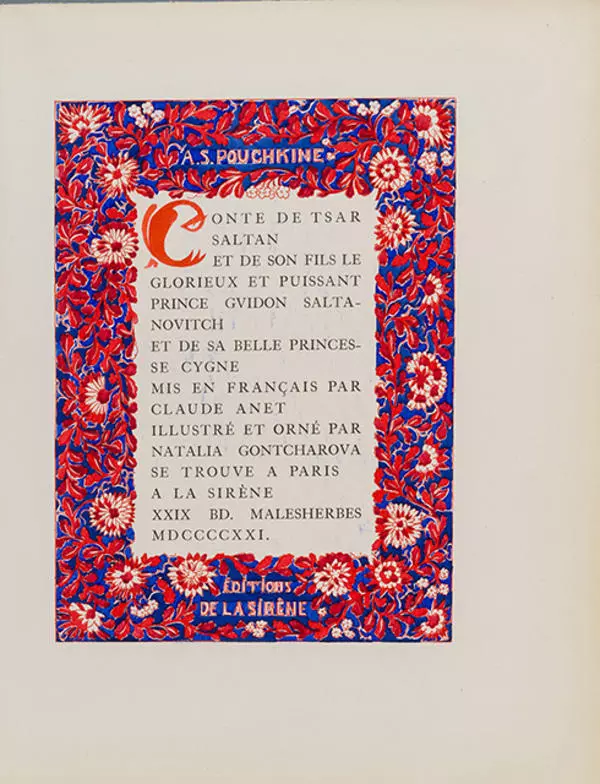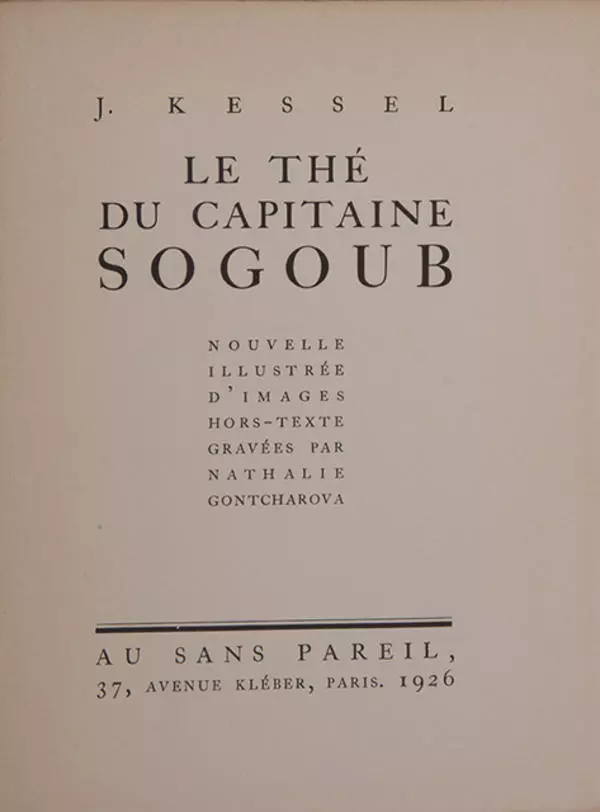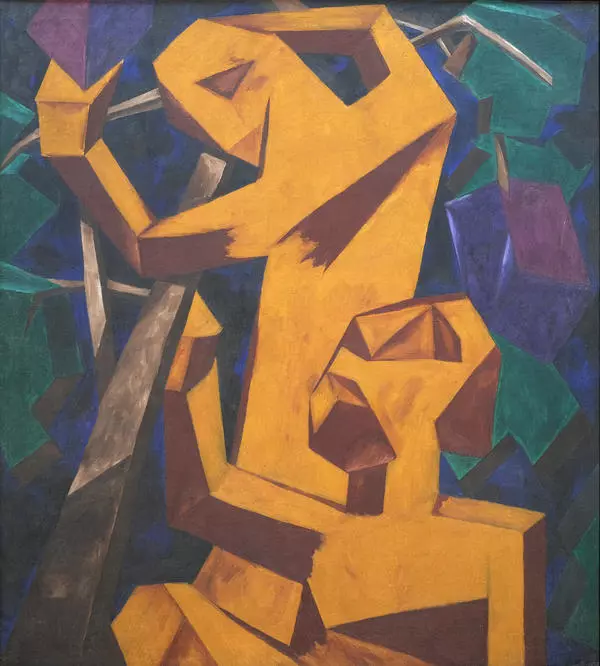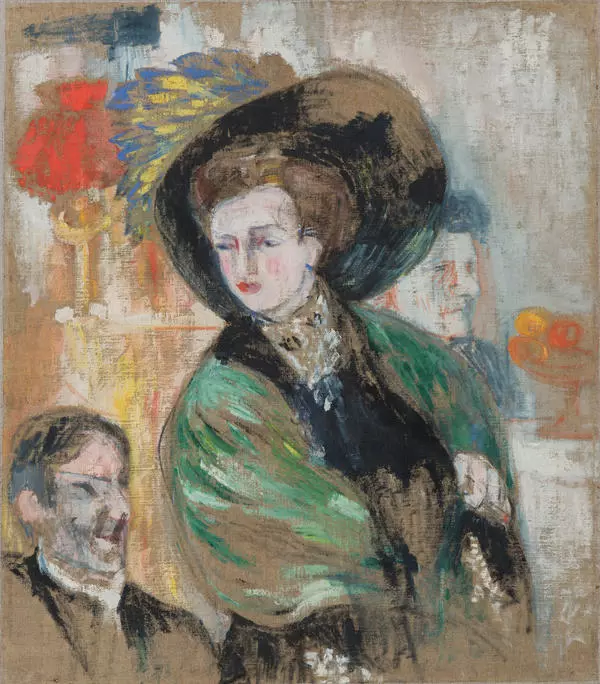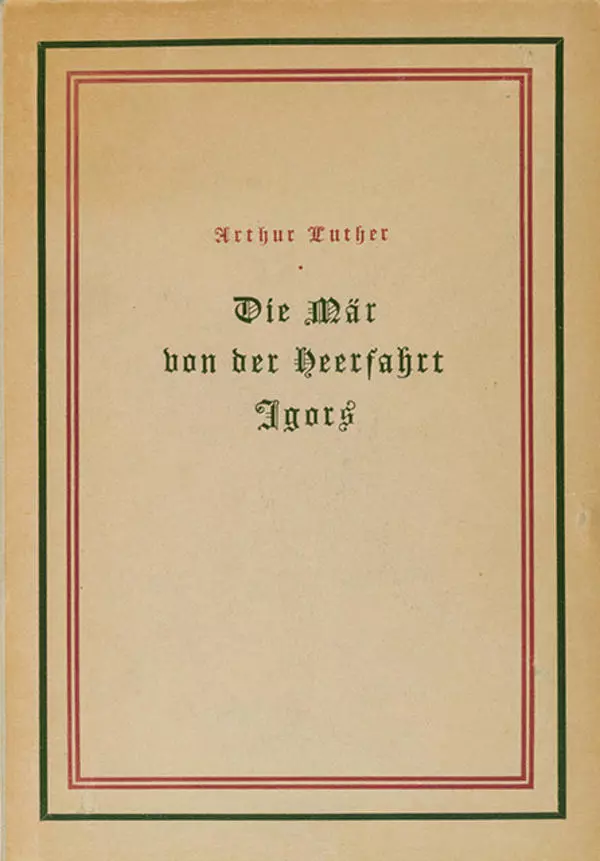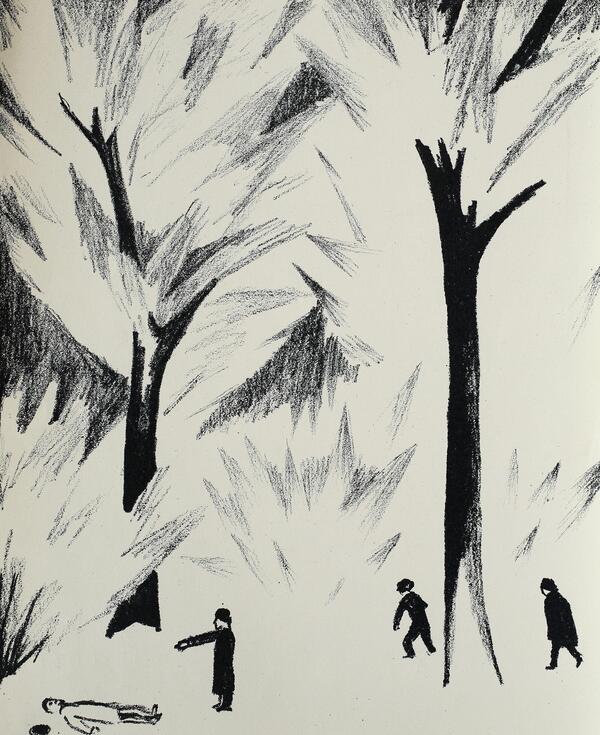Natalia Goncharova was a Russian avant-garde painter, graphic artist, and stage designer, as well as Mikhail Larionov’s wife. Goncharova was interested in Primitivism, Impressionism, and Fauvism, and painted many works in the Cubist style. She took painting lessons from Konstantin Korovin.
Goncharova took up religious themes more often than other masters of the Russian avant-garde. Deeply pious, she drew inspiration from the Holy Scripture, old icons, and the Primitivist folk style. She was particularly interested in Old Believers' popular prints, their artists adhering to gloomy motifs of the Apocalypse.
The four-part panel painting (tetraptych) The Evangelists shows the imprint of these influences, interpreted by Goncharova in her own creative manner. The piece was recognized even by her contemporaries as one of her most important works. Like the Deisis tier of the Orthodox iconostasis, the tetraptych’s parts are connected by the rhythm of the figures in front, two pairs of whom face each other, and by the painterly chord of the white haloes above the saints' heads combined with the scrolls containing the gospel texts.
Goncharova took up religious themes more often than other masters of the Russian avant-garde. Deeply pious, she drew inspiration from the Holy Scripture, old icons, and the Primitivist folk style. She was particularly interested in Old Believers' popular prints, their artists adhering to gloomy motifs of the Apocalypse.
The four-part panel painting (tetraptych) The Evangelists shows the imprint of these influences, interpreted by Goncharova in her own creative manner. The piece was recognized even by her contemporaries as one of her most important works. Like the Deisis tier of the Orthodox iconostasis, the tetraptych’s parts are connected by the rhythm of the figures in front, two pairs of whom face each other, and by the painterly chord of the white haloes above the saints' heads combined with the scrolls containing the gospel texts.
